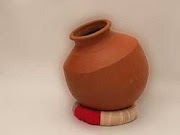Terminology used in Indian classical music
There are some terms which are frequently used in Indian classical music. Every one who are interested in Indian classical music or Hindusthani raag sangeet should be familiar with this terms.
Terminology of Indian classical music
Sargam
There are seven notes used in Indian classical music. These seven notes of the musical scale are Shadja (Sa), Rishabh (Re), Gandhara (Ga), Madhyama (Ma), Panchama (Pa), Dhaivata (Dha) and Nishada (Ni). Collectively these notes are called the sargam.
Alap
Alap is the opening section of a typical North Indian classical performance. It is a form of melodic improvisation that introduces and develops a raga and started at a slow tempo.
Arohana
Arohanam in the context of Indian classical music, is the ascending scale of notes in a raga.
Avarohana
Avarohana in the context of Indian classical music is the descending scale of any raga.
Vadi
The note which is strongly emphasized and most important is called the vadi. It also helpful to identify the appropriate time for singing or playing a raga.
Samvadi
The Samvadi is the second-most prominent note of a raga in Indian classical music.
Samay
Samay is the tradition ascribes of singing of certain ragas to particular times of the day or seasons. Performance of a raga at appropriate time may bring harmony, while playing at different times may bring disharmony.
Thaat
The thaat is the specification as to which of the alternate forms of swar will be chosen. It is the "Parent scale" in North Indian classical music. Thaat is a basis for classification of ragas. But a raga belonging to a certain thaat need not allow all the notes of the thaat, and might allow other notes.
Bandish
Bandish or gat is a fixed, melodic composition in Hindustani classical music whether vocal or instrumental. It is set in a specific raga, performed with tabla or pakhawaj.
Gamak
Gamak is a kind of ornamentation. Graceful turn, curve or cornering touch given to a single note or a group of notes is Gamak. It is used both in North Indian and South Indian classical music.
Antara
Antara is the 2nd Movement in a composition with the melodic progression generally in the upper regions of the octave.
Pakad
Pakad is generally accepted phrase or set of phrases which express the essential features of the essence of a particular raga of Hindustani classical music. It is the melodic theme of the raga. A person who has knowledge of classical music can easily identify the raga on listening the pakad.
Jhala
Jhala in Hindustani classical music denotes the fast-paced conclusions of classical music or raga before the Gat or Gati part starts.
Vilambit
Vilambit which is also known as vilambit laya in terms of Hindustani classical music is an introductory slow tempo or laya, between 10 and 40 beats per minute during the performance of a raga.




0 Comments